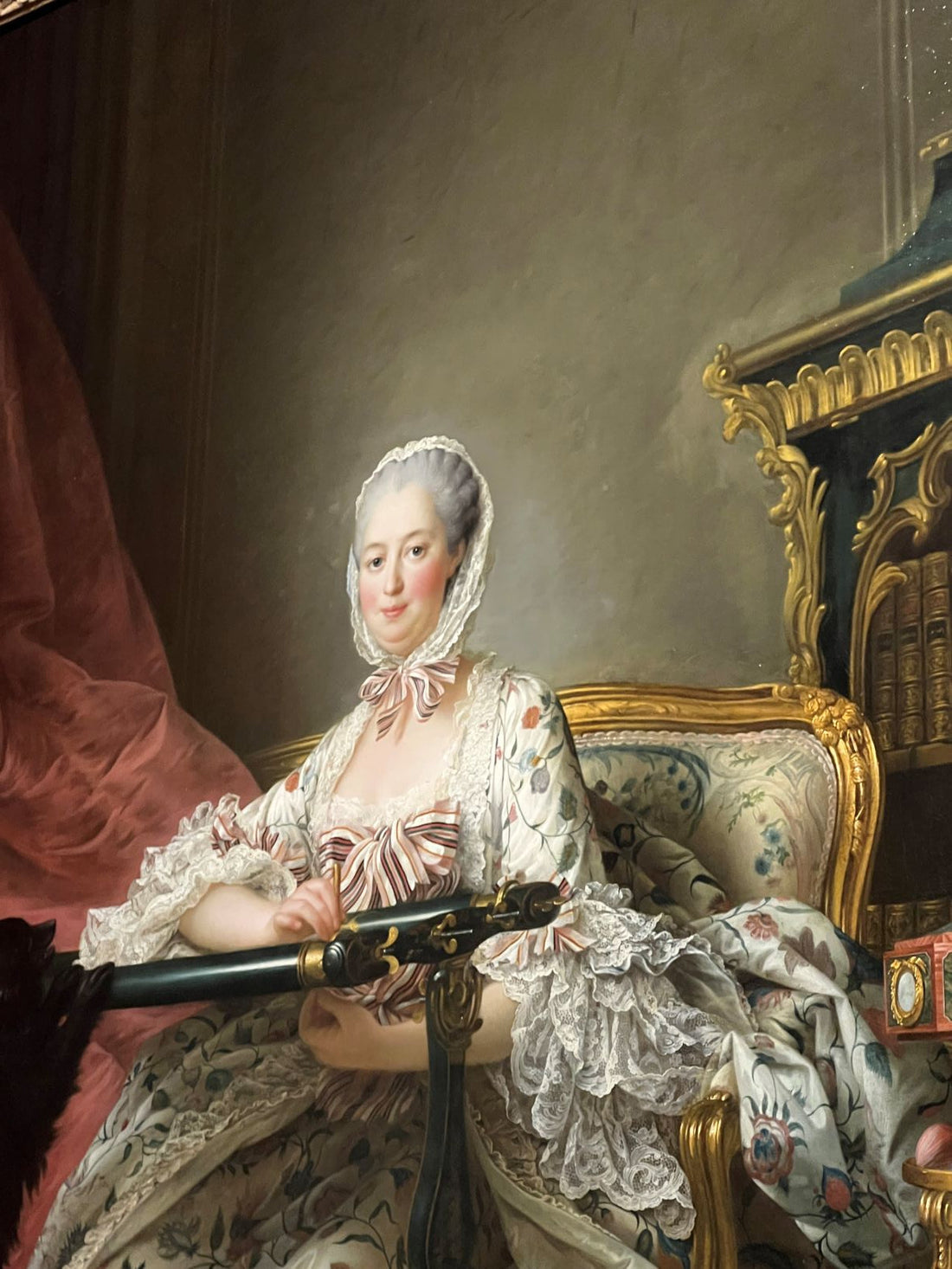
Gallery Tour. New knowledge in Art
Share
ART is one of the topics I want to explore as part of my self-discovery journey. Since childhood, I’ve been taught in school to visit art galleries, learn about paintings, notice the details, and understand art a little. To get started, all you need is time, access to the internet, and galleries.
In London, you can begin with The National Gallery and The Wallace Collection. These galleries offer free tours where museum staff talk about paintings on specific themes. I attended one of these tours and have already planned a few more. I’d like to share some of the paintings and their stories from the tour I recently attended.


The Story Behind “Self-Portrait as Saint Catherine of Alexandria” by Artemisia Gentileschi

In the early 1600s, a brilliant painter named Artemisia Gentileschi created a masterpiece called Self-Portrait as Saint Catherine of Alexandria. Artemisia was one of the few successful female artists of her time, which was rare in a world dominated by male painters. Her work stands out for its emotional power and skillful storytelling.
This painting is both a self-portrait and a tribute to Saint Catherine of Alexandria, a Christian martyr known for her intelligence, bravery, and devotion. Saint Catherine was a princess who stood up for her beliefs against Roman rulers. In the painting, Artemisia portrays herself as Catherine, symbolizing strength and resilience.
What You See in the Painting
In the artwork, Artemisia holds a spiked wheel, the symbol of Saint Catherine's martyrdom, as it was the tool of her torture. She gazes out of the painting, her expression calm but full of determination. She wears a soft golden dress with a delicate scarf draped over her shoulder. The light falls gently on her face, highlighting her features and creating a sense of intimacy.
The painting feels personal, almost as if Artemisia is telling her own story through the saint. Her life was full of struggles, including a traumatic event in her youth where she was assaulted and later had to defend her reputation in court. Despite this, she rose above her challenges and became a celebrated artist. In this painting, she connects her resilience to the bravery of Saint Catherine.
Why This Painting Matters
Artemisia’s Self-Portrait as Saint Catherine of Alexandria is not just a beautiful artwork—it’s a statement. By painting herself as a saint known for her intelligence and courage, Artemisia shows how she saw herself: a strong, determined woman who overcame hardship and claimed her place in history.
Her art inspires people to this day, reminding us of the power of perseverance and self-expression. Artemisia Gentileschi wasn’t just painting a saint—she was painting her own strength, telling the world that elegance, intelligence, and resilience can shine through even the darkest times.
The Story Behind “Flowers in a Glass Vase with a Tulip” by Rachel Ruysch

Rachel Ruysch, a Dutch artist from the 17th century, was a true master of flower still-life painting. Her work was incredibly detailed, vibrant, and full of life, making her one of the most famous painters of her time. Flowers in a Glass Vase with a Tulip is a stunning example of her skill and artistry, showcasing her love for nature and her ability to tell stories through her arrangements.
What You See in the Painting
In this painting, Rachel arranged an exquisite bouquet of flowers in a glass vase. A bold tulip catches the eye, surrounded by roses, lilies, and a variety of other blooms. Each flower is painted with meticulous detail, making them look lifelike and fresh. However, if you look closely, you’ll notice something interesting: not all of these flowers bloom in the same season.
Rachel often combined flowers from spring, summer, and even autumn into a single arrangement. This wasn’t realistic in nature, but it allowed her to create an idealized bouquet that celebrated the beauty of all seasons at once. For example, the tulip (a spring flower) might sit beside a late-summer rose or an autumn chrysanthemum. This creative choice turned her paintings into timeless works of art, unbound by the limitations of the natural world.
Alongside the vibrant blooms, Rachel included details like wilting petals, small insects, and delicate veins on the leaves. These elements weren’t random—they symbolized the passage of time, reminding viewers that life and beauty are fleeting. This theme, known as vanitas, was common in Dutch art and added a layer of meaning to her work.
Why This Painting Matters
Rachel Ruysch wasn’t just painting flowers; she was telling a story about life. The vibrant flowers symbolize the joys and beauty of existence, while the wilting petals and insects hint at the passage of time and the inevitability of change.
What makes Rachel’s work even more impressive is that she achieved fame as a female artist in a time when few women had the opportunity to pursue careers in art. She came from a scientific family—her father was a botanist—which helped her develop her incredible skill for observing and painting nature.
The Legacy of Rachel Ruysch
Flowers in a Glass Vase with a Tulip is more than just a pretty image. It’s a celebration of life, a reflection on mortality, and a showcase of Rachel Ruysch’s extraordinary talent. Her ability to blend art with subtle symbolism has made her one of the greatest flower painters of all time, and her works continue to inspire and captivate viewers centuries later.
François-Hubert Drouais’ “Madame de Pompadour at her Tambour Frame”

François-Hubert Drouais, a celebrated French Rococo painter of the 18th century, captured one of the most influential and fascinating women of his time in Madame de Pompadour at her Tambour Frame. This exquisite portrait of Madame de Pompadour, the mistress of King Louis XV, combines elegance, intelligence, and artistry, revealing much about her character and her role in shaping French culture.
What You See in the Painting
In this portrait, Madame de Pompadour is depicted seated at a tambour frame (a type of embroidery frame), delicately working on an embroidery project. She wears an opulent dress adorned with intricate lace and ribbons, a hallmark of Rococo fashion. The pastel tones and soft textures create a sense of refinement and femininity, while her poised expression reflects her intelligence and composure.
The background is rich with symbolic details. Books and musical instruments appear around her, hinting at her intellect, artistic tastes, and well-rounded education. Madame de Pompadour wasn’t just a beauty; she was a patron of the arts, a political advisor, and an intellectual force in the French court. Drouais skillfully integrates these elements to emphasize her sophistication and contributions beyond her romantic relationship with the king.
Interesting Fact
An intriguing aspect of François-Hubert Drouais' Madame de Pompadour at her Tambour Frame is its unique composition. Close examination reveals that the painting is composed of two canvases: a smaller one containing the head, shoulders, and right forearm, which has been seamlessly integrated into the larger full-length portrait. This technique suggests that Drouais initially painted Madame de Pompadour's likeness from life on the smaller canvas, capturing her features with precision. Following her death in April 1764, he expanded the composition by incorporating this smaller canvas into a more elaborate setting, completing the full portrait in May 1764. This method allowed Drouais to honor her memory by presenting a lifelike representation within a grander context, highlighting her cultural sophistication and patronage of the arts.

Legacy of the Painting
Madame de Pompadour at her Tambour Frame is not just a portrait; it’s a window into 18th-century French society and the remarkable woman who left a lasting impact on its culture. Through Drouais’ artistry, we see Madame de Pompadour not only as a symbol of beauty and elegance but also as a powerful, intelligent figure who shaped art, fashion, and politics in her time.

The Story of “Mrs. Siddons” by Thomas Gainsborough

Thomas Gainsborough, one of the most celebrated British portrait painters of the 18th century, captured the elegance and charisma of his subject in Mrs. Siddons. This 1785 painting portrays Sarah Siddons, a famous actress of the time, known for her powerful stage presence and emotional depth. Gainsborough's masterpiece highlights both her theatrical grandeur and her human vulnerability.
What You See in the Painting
In this portrait, Mrs. Siddons is seated, exuding poise and sophistication. She wears an opulent blue dress with shimmering gold accents, her outfit reflecting both her status and her dramatic flair. Her elaborate hat, adorned with feathers, adds a touch of theatricality. Gainsborough uses soft lighting to emphasize her delicate features, and her expressive face seems to capture a moment of quiet thoughtfulness.
The background is dark and muted, with subtle touches of earthy tones that allow Mrs. Siddons to stand out as the luminous centerpiece. Gainsborough’s loose, fluid brushwork creates a sense of motion, giving the painting a dynamic quality that mirrors Mrs. Siddons’ energy and spirit.
Sarah Siddons was renowned for her dramatic performances, particularly in tragic roles like Lady Macbeth. Gainsborough’s portrait subtly reflects her theatrical career through her commanding posture and the dramatic contrast of light and shadow. She appears larger-than-life yet introspective, much like the roles she played on stage.
Why This Painting Matters
Mrs. Siddons is more than just a portrait; it’s a celebration of two great artists—the painter and his subject. Gainsborough not only captures her outer beauty but also hints at the depth of her character and the strength of her spirit. The painting is a testament to Mrs. Siddons’ status as a cultural icon and Gainsborough’s ability to bring his subjects to life on canvas.
Legacy
Today, Mrs. Siddons remains one of Gainsborough’s most admired works. It reflects the elegance of the Georgian era, the rise of celebrity culture, and the enduring appeal of a collaboration between two extraordinary talents. The painting continues to inspire viewers, offering a glimpse into the world of theater, art, and society in 18th-century Britain.
Thank you!
The National Gallery Tours for more information:
https://www.nationalgallery.org.uk/events
#thenationalgallery #art






